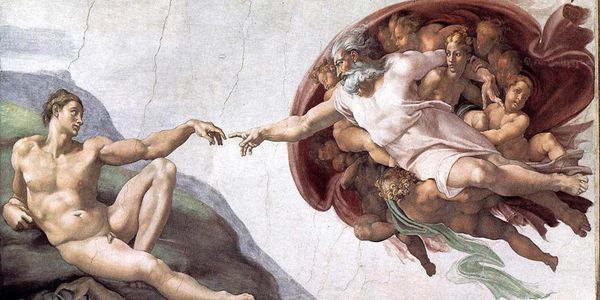
The Treasures of Immaculate Conception Parish
Father Gerald Dunne's Relics
Upcoming Feast Days
Get updates on relics, saints, feast days & Catholic inpiration
Father Gerald Dunne OSFS
In 1996 The Contemplative Sisters of the Good Shepherd in Philadelphia were in need of a Priest to conduct the 6:00 AM daily Mass in their community. Father Dunne gladly responded to this need with the thought; “I get up early enough”. For the next decade, Father Dunne became an integral part of those cloistered, contemplative Sisters' mission rooted in the daily celebration of the Eucharist and the Liturgy of the Hours.
Over those years while teaching theology at Judge High School, Father Dunne developed close friendships with many of those Sisters of the Good Shepherd. One of those was Sister Jude Ellen. Over the proceeding decades many of those contemplative communities of The Sisters of the Good Shepherd grew smaller. There was a need to consolidate many of the convents and communities in North America and Europe.
Sister Jude Ellen was given the assignment to oversee many of those consolidations. In the course of that work, Sister Jude Ellen discovered sacred relics of the saints left behind in the sacristies of those convents. Remembering Father Dunne’s devotion and interest in Church relics, she entrusted them to his care. Over time, this collection grew incredibly as more convents were consolidated.
Today this amazing treasure of the Church is situated in Immaculate Conception Parish within the Diocese of Wilmington. Still under the care of Father Dunne, he has become the de facto Custos Reliquiarum.
Relics & Our Catholic Tradition
The veneration and use of the relics of saints have been part of the Christian faith and tradition since the earliest days when the faithful gathered at the resting place of Christian martyrs. We have documents as early as 156 describing the practice and place relics have in our worship of god when the bones of Polycarp were collected and placed in a suitable place for us to gather together.
…we took up his bones, which are more valuable than precious stones and finer than refined gold, and laid them in a suitable place, where the Lord will permit us to gather ourselves together, as we are able, in gladness and joy, and to celebrate the birthday of his martyrdom.
Re: Polycarp
While not absolutely required, virtually every Catholic Church’s altar contains, is constructed around, or is constructed over relics of a saint. Two famous examples are St. Peter’s Basilica and St. Paul’s Basilica both constructed in such a way that their alters are directly above the original resting place of Peter and Paul. In 787 The Second Council of Nicaea decreed that relics should be used to consecrate churches.
The tradition in the Roman liturgy of placing relics of martyrs or other saints beneath the altar should be preserved, if possible. But the following should be noted: …The greatest care must be taken to determine whether the relics in question are authentic; it is better for an altar to be dedicated without relics than to have relics of doubtful authenticity placed beneath it. read more at adoremus.org
While we offer our worship to God alone, relics call to mind the holiness of a saint and his part in God’s work. They inspire us to consider a saint’s example, ask for their intercession, and pray that we may live the same kind of life. In the scriptures and throughout the ages God has chosen to perform many miracles in the presence of relics.
Pilgrimage
The Catholic Catechism recognizes the value of pilgrimage as a chance for Catholics to work on their faith. The Catechism states: Pilgrimages evoke our earthly journey towards heaven and are traditionally very special occasions for renewal in prayer.
—Catholic Catechism 2691
A pilgrimage in the most simple terms is a spiritual journey. A pilgrimage is an expression of reverence for God. By making a pilgrimage to a place of significance dedicated to honoring a saint pilgrims honor God as well. The purpose of a pilgrimage is an inner transformation by contemplating the spiritual aspects of the life of Jesus and the saints.
Abraham may be the first pilgrim in the history of the chosen people. Long after his descendants made another pilgrimage to the promised land in Exodus all Israelite males over the age of 12 were required to go on a pilgrimage three times a year on the three great feasts:
- Passover
- Pentecost
- Feast of Tabernacles
Blessed is he who comes in the name of the Lord! We have blessed you from the house of the Lord.
—Psalms 118:26
Pilgrimages have been a part of the Catholic tradition since the 4th century. The destinations for pilgrims have been places that were part of Jesus’ life or in the tombs of martyrs and saints. The places of miracles, healing, and holiness that come to mind are usually the Holy Land, the Vatican, Lourdes, and other faraway places.
To go on pilgrimage is not simply to visit a place to admire its treasures of nature, art, or history. To go on pilgrimage really means to step out of ourselves in order to encounter God where he has revealed himself, where his grace has shone with particular splendor and produced rich fruits of conversion and holiness among those who believe.
—Pope Benedict
Although one thinks of all of those faraway or grand sites as destinations for a pilgrimage, the truth is that you can make one anywhere, for any spiritual purpose. If you live in the mid-Atlantic region, the Wilmington or close-by Diocese, and definitely within Immaculate Conception Parish in Maryland consider making a mini-pilgrimage on a feast day of any relics in the care of Father Dunne.